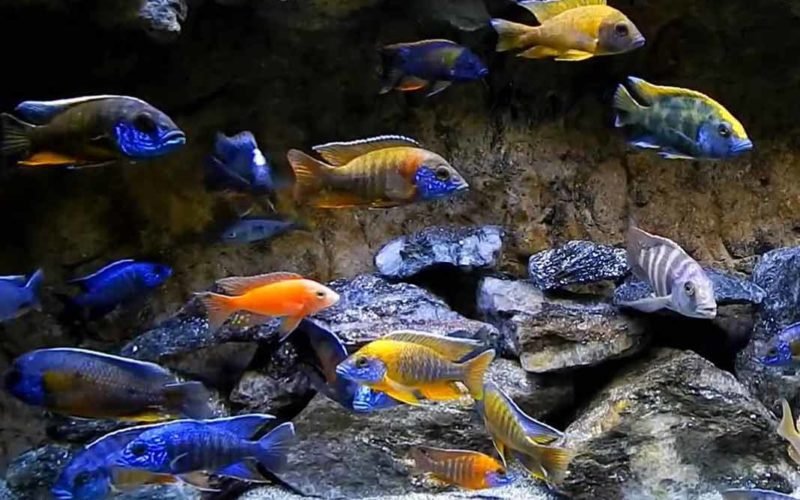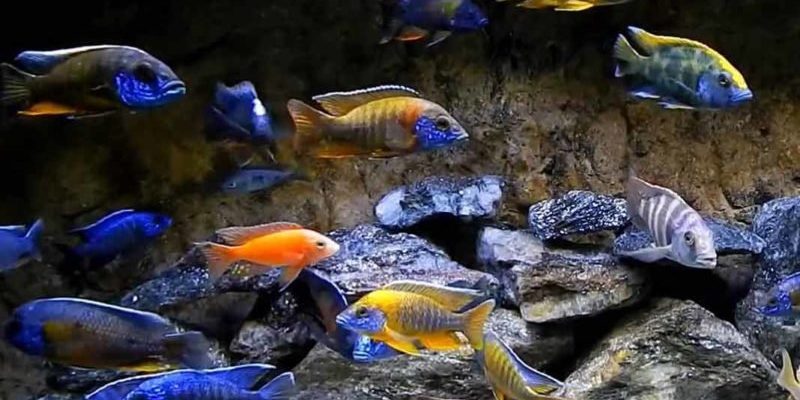
So, what’s the best way to ensure your cichlids thrive in your aquarium? It’s like hosting a dinner party: you want the right environment, tasty food, and a touch of personal attention. In this guide, we’ll walk through everything from tank setup to feeding habits, ensuring your new aquatic companions live happy, healthy lives.
Choosing the Right Tank Size
When setting up your cichlid aquarium, tank size is crucial. Cichlids can grow quite large and tend to be territorial, so offering enough space is essential for their well-being. A 30-gallon tank is a good starting point for smaller cichlid species, while larger ones, like the Oscar or Jaguar cichlid, will need a 75-gallon tank or bigger.
Let’s break it down a bit. In a smaller tank, cichlids may feel cramped, leading to stress and aggression. Think of it like being at a party where everyone is too close together—nobody enjoys it! A spacious tank allows cichlids to establish their territories and reduce skirmishes. Plus, more water volume means better water quality, which is vital for their health.
In addition to size, consider the shape of the aquarium. A longer tank provides more swimming space, which is ideal for active fish. Make sure your tank has a secure lid since some cichlids are known jumpers. Trust me; it’s much easier to prevent a splash than to clean up afterward!
Creating the Ideal Environment
Cichlids thrive best in an environment that mimics their natural habitat. This usually involves a substrate of sand or gravel, plenty of hiding spots, and decor. Use rocks, caves, and plants to create an engaging landscape. Plant options like Java fern or Anubias are excellent, as they can survive with minimal care.
Speaking of decor, think of it as a home upgrade for your fish. The more places for them to explore and hide, the happier they will be. Cichlids often use these hiding spots to manage stress, especially during mating or when they feel threatened.
Another essential aspect of creating the right environment is water conditions. Cichlids prefer slightly alkaline water with a pH of around 7.5 to 8.5. Invest in a reliable water testing kit to monitor these conditions regularly. You might also need a good filtration system since cichlids can be messy eaters. A robust filter not only keeps the water clean but also provides essential water movement, which many cichlids enjoy.
Feeding Your Cichlids
Feeding cichlids is like picking out the perfect dish for a dinner guest. Each species has different dietary needs, but a balanced diet is crucial. Most cichlids will thrive on a combination of high-quality pellets, flakes, frozen or live foods, and vegetables. Varied diets keep them healthy and vibrant.
When choosing food, look for options high in protein since cichlids are naturally carnivorous. You can feed them sinking pellets or provide live food like brine shrimp or bloodworms. Just imagine them nibbling away at a gourmet meal; it’s essential for their growth and vitality.
Keep in mind, overfeeding can lead to health issues, so it’s best to stick to a feeding schedule. Feeding once or twice a day is generally ideal, and you should only offer what they can consume in a few minutes. If you notice leftover food in the tank, it’s time to cut back a bit.
Maintaining Proper Water Conditions
Water quality can make or break your cichlid’s health. Think of it as the foundation of your aquarium house—if it’s shaky, everything else can crumble. Regular water changes are vital; aim for 25% to 30% changes every week. This helps to keep toxins like ammonia and nitrate in check.
Temperature is another crucial factor. Most cichlids prefer a water temperature between 75°F to 80°F. Use a reliable heater and thermometer to maintain this range. Sudden temperature fluctuations can stress your cichlids, leading to health problems or even illness.
To ensure the best water quality, consider using a water conditioner to remove harmful chemicals from tap water. You’ll also want to monitor the levels of ammonia, nitrites, and nitrates regularly. This way, you can catch any potential issues before they turn into something serious.
Understanding Cichlid Behavior
Cichlids are known for their diverse behaviors, and understanding these can help foster a harmonious aquarium environment. They can be territorial and might display aggression towards other fish, especially during breeding season. This means it’s essential to choose tank mates carefully. You want to avoid housing them with small or overly docile fish that might become targets.
During breeding, cichlids can become particularly protective of their space. They may dig to create nests or chase off intruders. If you notice this behavior, don’t panic—it’s natural! Just ensure they have enough space to feel comfortable. Sometimes, you might need to separate them if aggression escalates.
You might also find cichlids displaying unique social interactions. Some are more outgoing, while others prefer to keep to themselves. Observe their behaviors and adjust your tank setup accordingly. Providing ample hiding places allows shy ones to retreat while others can socialize openly.
Dealing with Common Health Issues
Like any pet, cichlids can face health challenges. Regular observation is key to catching problems early. Look out for signs of illness, such as changes in appetite, unusual swimming patterns, or visible spots on their bodies.
Some common issues include ich (white spot disease), which appears as small white dots on the fish. If you see this, it’s crucial to act quickly. Treating ich often involves raising the water temperature and adding a specific medication to the tank.
Another common ailment is fin rot, often caused by poor water quality. If you notice fraying fins or discoloration, check your water parameters and perform a water change. You can treat fin rot with medication, but the focus should be on improving their environment to prevent future occurrences.
You might wonder if stressing out your fish could lead to health problems. Absolutely! Stressed cichlids can fall ill more easily, so maintaining a peaceful and clean environment is vital to their health.
Choosing Compatible Tank Mates
When it comes to tank mates, you want to ensure everyone gets along. Not all fish vibe well together, especially with cichlids being known for their territorial nature. Smaller fish, like tetras or guppies, might not survive long with more aggressive cichlid species. Instead, consider tank mates like larger barbs, catfish, or other robust cichlid species.
It’s also helpful to introduce new fish gradually. Start by placing them in a separate, smaller tank called a quarantine tank for a few weeks. This helps prevent the spread of disease and allows your cichlids to adjust to the idea of new neighbors without immediate confrontation.
Lastly, don’t forget the importance of providing ample hiding spots. The more areas there are for fish to escape if tension arises, the less likely any harm will come to them. It’s all about creating a balanced community in your aquarium.
—
Caring for cichlids in a freshwater aquarium can be a rewarding journey filled with vibrant colors and playful behavior. By choosing the right tank size, creating an inviting environment, and paying attention to their needs, you can ensure a happy home for your aquatic friends. Ultimately, just like any relationship, it’s about putting in the time and effort to foster a loving environment. Enjoy your cichlid adventure—it’s bound to be a splash!

